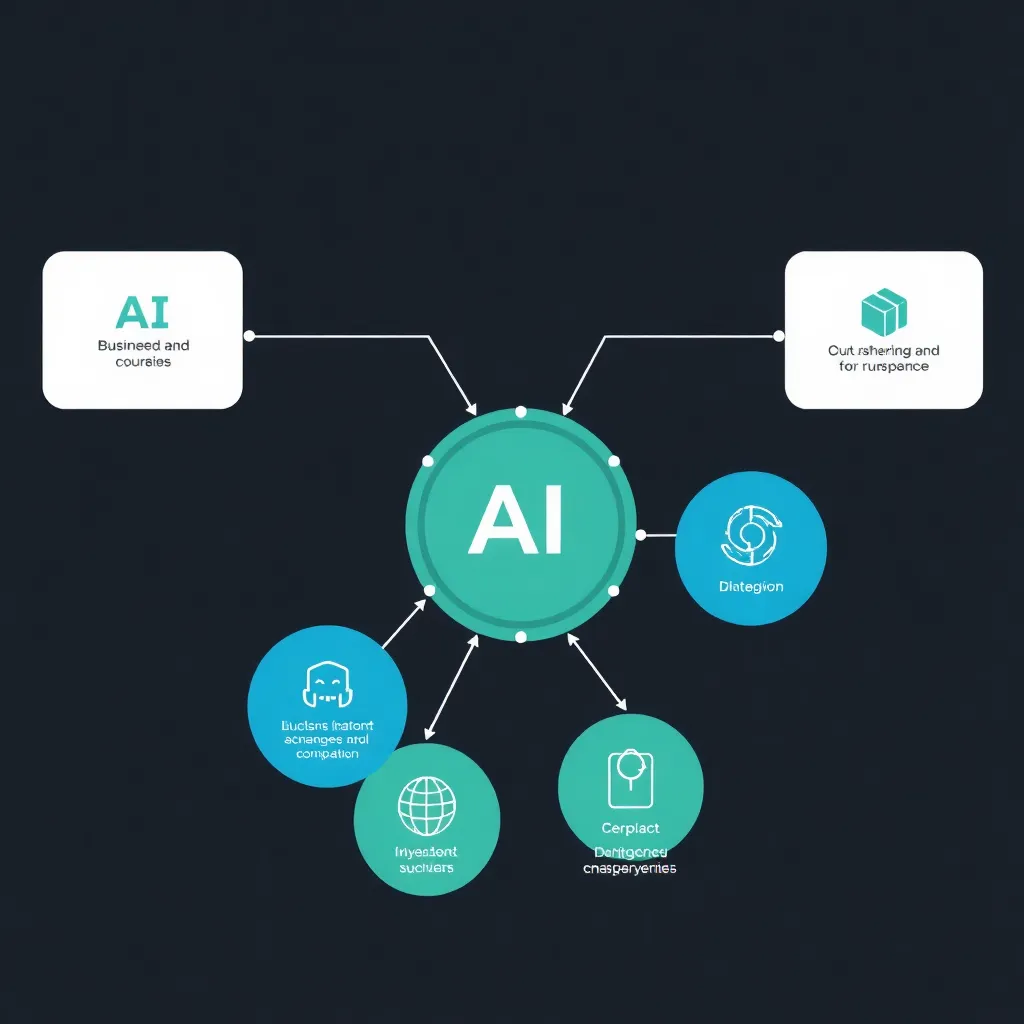One of the primary reasons organizations fail to see a return on their AI investments is due to a lack of clear goals and strategies. Many businesses adopt AI technologies without fully understanding how they can be leveraged to drive revenue growth or improve operational efficiency. To avoid this pitfall, it’s essential to establish specific, measurable objectives for AI adoption and develop a roadmap for achieving them.
Another common obstacle to AI monetization is inadequate data management. AI algorithms rely on high-quality, relevant data to produce accurate insights and drive decision-making. However, many organizations struggle to integrate disparate data sources, ensure data quality, and maintain data security. By implementing robust data management practices, businesses can unlock the full potential of their AI investments.
According to a study by McKinsey, companies that successfully monetize AI often have a strong focus on talent acquisition and development. This includes hiring AI experts, upskilling existing employees, and fostering a culture of innovation and experimentation. By building a team with the right skills and mindset, organizations can drive AI adoption and ensure that their investments generate meaningful returns.
Identify High-Impact Areas
Identifying areas where AI can have the most significant impact is crucial to maximizing ROI. This involves analyzing business operations to pinpoint pain points, inefficiencies, and opportunities for automation. By doing so, businesses can uncover areas that are ripe for AI-driven transformation, leading to increased productivity, reduced costs, and improved decision-making.
One such area is customer service, where AI-powered chatbots can help resolve customer queries more efficiently and free up human representatives to focus on more complex issues. According to a study by Gartner, by 2025, 25% of customer service operations will use virtual customer assistants, resulting in significant cost savings and improved customer satisfaction.
Another area that can benefit from AI-driven insights is supply chain management. AI algorithms can analyze vast amounts of data to optimize logistics, predict demand, and identify potential bottlenecks. This can lead to reduced inventory costs, improved delivery times, and enhanced supply chain resilience. In fact, a study by McKinsey found that AI can increase supply chain efficiency by up to 10%.
Predictive maintenance is another area where AI can have a significant impact. By analyzing equipment sensor data and other variables, AI algorithms can predict when maintenance is required, reducing downtime and improving overall equipment effectiveness. This can lead to significant cost savings and improved productivity, making it an attractive area for businesses to focus on when implementing AI solutions.

Develop a Clear Business Case
A well-defined business case serves as the foundation for a successful AI implementation, as it provides a clear understanding of the project’s objectives, benefits, and expected outcomes. By establishing a robust business case, organizations can secure stakeholder buy-in, allocate necessary resources, and ensure everyone is aligned towards a common goal.
At the heart of a solid business case lies the definition of clear goals, key performance indicators (KPIs), and success metrics. These metrics enable organizations to track progress, identify areas that require improvement, and make data-driven decisions. According to a Gartner survey, many organizations struggle to measure the ROI of their digital initiatives, highlighting the importance of establishing a clear framework for measurement and evaluation.
By setting specific, measurable, achievable, relevant, and time-bound (SMART) goals, organizations can create a roadmap for their AI initiatives and ensure everyone is working towards a common objective. For instance, a goal might be to reduce operational costs by 15% within the next 6 months by implementing an AI-powered automation solution. Having such clear goals in place enables organizations to track progress, identify areas for improvement, and make adjustments as needed.
Ultimately, a well-defined business case and clear goals enable organizations to demonstrate the value of their AI initiatives and secure continued investment and support. By establishing a robust framework for measurement and evaluation, organizations can ensure their AI initiatives drive real business value and achieve their desired outcomes.
Leverage AI-Driven Insights
One of the most significant advantages of AI is its ability to uncover hidden patterns, trends, and correlations within large datasets. This capability allows businesses to gain a deeper understanding of their operations, customers, and market dynamics, enabling them to make informed strategic decisions. By analyzing vast amounts of data, AI can identify relationships that may not be apparent to humans, providing valuable insights that can drive business growth.
For instance, AI-powered predictive analytics can help businesses identify high-value customers, anticipate demand, and detect potential fraud. According to a study by Gartner, organizations that use predictive analytics are more likely to achieve their business objectives. By leveraging AI-driven insights, businesses can optimize their operations, improve customer satisfaction, and create new revenue streams.
The applications of AI in data analysis are vast and varied. From supply chain optimization to customer segmentation, AI can help businesses streamline their operations, reduce costs, and improve efficiency. By automating data analysis, AI can also free up human resources, allowing teams to focus on higher-value tasks that drive innovation and growth.

Build a Strong Data Foundation
High-quality data is essential for successful AI initiatives, as it directly impacts the accuracy and reliability of AI-driven insights and decisions. Inaccurate or incomplete data can lead to biased models, flawed predictions, and poor decision-making, ultimately resulting in failed AI projects.
To ensure data accuracy, completeness, and relevance, it’s crucial to invest in data governance, quality control, and integration. Data governance involves establishing policies, procedures, and standards for data management, while quality control involves implementing checks and balances to detect and correct errors. Data integration, on the other hand, involves combining data from disparate sources into a unified, cohesive view.
A solid data foundation is critical for building trust in AI systems and ensuring that they deliver meaningful business value. According to a Gartner report, organizations that invest in data quality and governance are more likely to achieve significant benefits from their AI initiatives.
By prioritizing data quality and governance, organizations can create a strong foundation for their AI projects, drive better decision-making, and achieve greater business success. This requires a proactive approach to data management, involving ongoing monitoring, evaluation, and improvement of data quality and governance practices.
Collaborate with Stakeholders
Effective collaboration is indeed a crucial aspect of AI adoption, as it enables organizations to maximize their return on investment (ROI). When stakeholders from various departments come together, they can ensure that AI initiatives are aligned with the company’s overall business objectives. This alignment is vital, as it helps to focus AI efforts on areas that will have the most significant impact on the organization.
Moreover, collaboration facilitates a deeper understanding of user needs, which is essential for developing AI solutions that are both effective and user-friendly. By engaging with stakeholders across the organization, businesses can gather valuable insights into the needs and pain points of their users, enabling them to create AI-powered solutions that meet those needs.
A culture of experimentation, continuous learning, and open communication is also essential for successful AI adoption. This culture encourages stakeholders to share their ideas, experiment with new approaches, and learn from their mistakes. According to a report by McKinsey, organizations that foster a culture of experimentation are more likely to achieve significant business outcomes from their AI initiatives.
By promoting open communication and collaboration, organizations can break down silos and ensure that AI initiatives are integrated into existing business processes. This integration is critical, as it enables businesses to leverage AI to drive meaningful change and achieve their desired outcomes. By working together, stakeholders can overcome the challenges associated with AI adoption and realize the full potential of AI technologies.
Conclusion: Turning AI into ROI
When it comes to monetizing AI, a strategic approach is crucial. This involves identifying high-impact areas where AI can drive the most value, whether it’s improving operational efficiency, enhancing customer experiences, or unlocking new revenue streams. By focusing on these areas, organizations can maximize their returns on AI investments and drive business growth.
A clear business case is also essential for monetizing AI. This involves defining specific goals and objectives, such as increasing revenue, reducing costs, or improving productivity. By establishing a clear business case, organizations can ensure that their AI initiatives are aligned with their overall business strategy and are more likely to deliver tangible returns.
Leveraging AI-driven insights is another key aspect of monetizing AI. This involves using machine learning algorithms and data analytics to uncover hidden patterns, trends, and correlations that can inform business decisions. By leveraging these insights, organizations can identify new opportunities, optimize operations, and drive innovation.
Building a strong data foundation is also critical for monetizing AI. This involves collecting, processing, and analyzing large datasets to fuel AI algorithms and models. According to IBM, high-quality data is essential for AI success, and organizations that prioritize data management are more likely to achieve their AI goals. By building a strong data foundation, organizations can ensure that their AI initiatives are based on accurate, reliable, and relevant data.
